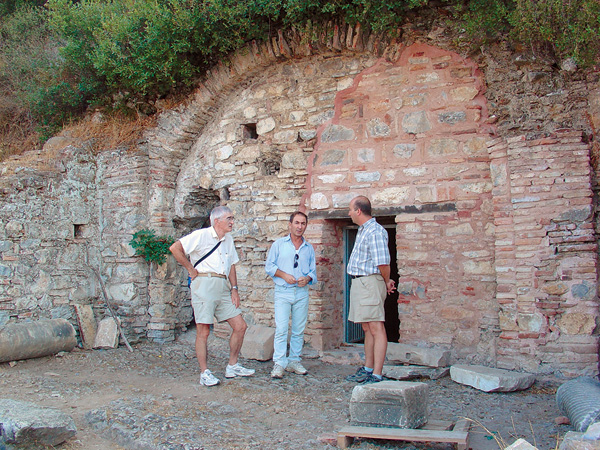Image Details

Sarah Crossan
THE EXTERIOR OF THE CAVE OF ST. PAUL at Ephesus serves as a meeting place for (from left to right) author John Dominic Crossan, Turkish inspector Recep Okçu, who helps oversee excavations at the site, and his colleague Haluk Çetinkaya. The frescoes inside the cave first piqued the interest of Crossan in 2002 when he saw a photo similar to that on p. 29 (which recently appeared in BR). They seemed to show Paul and a female disciple (either Thecla or her mother Theocleia, known from the apocryphal Acts of Paul and Thecla) as equals, standing beside each other, making the same proclamatory hand gesture. The painting suggested to Crossan the Paul of Romans 16:1–6, who commends several women for the active role they have taken in the church leadership. That the woman’s eyes were later gouged out provided evidence of an early shift in attitude toward women. This shift, Crossan notes, is reflected in the New Testament itself, where the later letters attributed to Paul (but not actually written by him, such as 1 Timothy) discourage women from teaching or even speaking with authority to men.
